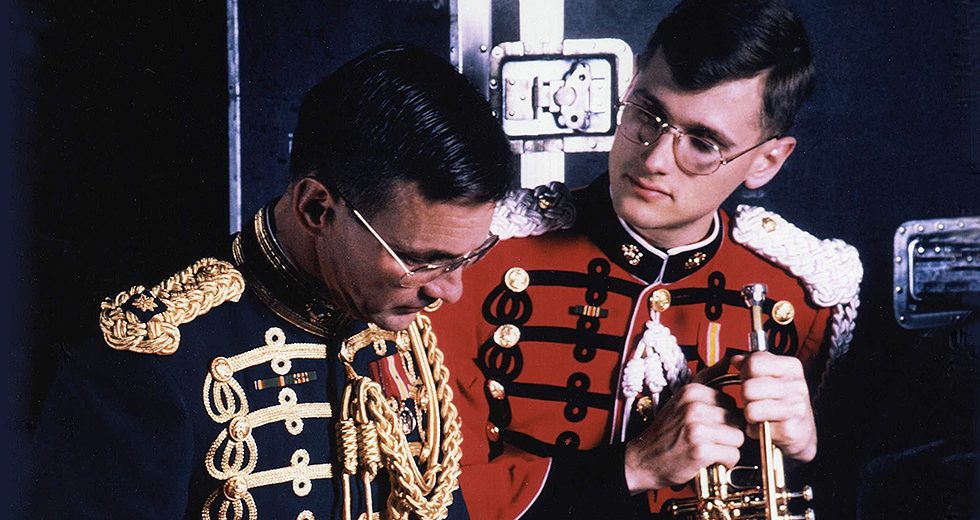
In mid-September of 1993, when President Bill Clinton presided over the historic handshake between PLO Chairman Yasser Arafat and Israeli Prime Minister Yitzhak Rabin at the Israeli-PLO peace accord signing, John Hagstrom was there.
Now second trumpet with the Chicago Symphony Orchestra, Hagstrom also was the trumpet soloist at the Camp David wedding of President George H.W. Bush’s daughter Dorothy, at numerous White House events, and at numerous military ceremonies at the Pentagon and Arlington National Cemetery.
All of that and much more happened during Hagstrom’s six-year tenure with “The President’s Own” U.S. Marine Band from 1989-1995. Being a member of that famously virtuosic group, he says, prepared him well for the CSO — his artistic home now for 22 years. “The people I worked with and mentors I had while in the band were tremendous, and really influenced me to focus my efforts in efficient ways,” he said.
On Oct. 24, when the Marine Band plays a free concert at Symphony Center, Hagstrom’s former and current gigs will collide. He’ll perform from the catwalk above the stage during a piece called The Storyteller. Composed by Chicago native James Stephenson, it’s a trumpet solo featuring current Marine Band trumpeter Amy McCabe, and also a tribute to the late and legendary CSO trumpet player Adolph “Bud” Herseth. Hagstrom also will take part in a performance of “Semper Fidelis,” written in 1888 by the one of the Marine Band’s former conductors, John Philip Sousa.
“I think the most fundamental commonality between the Marine Band and the Chicago Symphony Orchestra is that they’re governed by an ideal,” Hagstrom said. “Not by trying to be ‘just good enough for this’ or ‘just a little better than that,’ but being accountable to what we can imagine. When I was in the Marine Band, we would talk about that. The term we used was not to be ‘self-referential,’ which is easy to do. We’re good because we say we are, because we’re us. That’s a sort of circuitous dead-end. What I find invigorating, but also exhausting, is that both of these organizations are faithfully committed to the ideal.”
Both the CSO and the Marine Band are also very much the sum of their respective parts — what Hagstrom describes as “the aggregate discipline and virtuosity of the players.”
“But there’s also a new organism that’s formed when everybody works together,” he said. “It’s the flock flying together that forms its own kind of identity, its own judgments and reflexes. So you’re contributing toward that — but you’re also deferring to it.”
As for the notion that bands (which lack strings) are artistically inferior to orchestras, Hagstrom dismisses it entirely. That’s just not true, he contends, particularly in the case of the meticulously prepared and highly skilled Marine Band. “Part of the reason for that stereotype,” he said, “is because some of the greatest musical compositions have been written for the orchestra. Even so, one is just different from the other.”
In repertoire and creative expression, yes. But there’s a common drive toward betterment, Hagstrom said, and a shared belief that collaboration is the best means to that end.
“For me, it is a triumph of humanity when people are governed by the idea and the promise of what our best efforts can yield,” he said. “As great as the music is, the sound you hear is really the affirmation of what teamwork can produce when everybody will do whatever it takes.”
TOP: John Hagstrom with Col. Timothy W. Foley, the 26th director of “The President’s Own” U.S. Marine Band. | Photo: Courtesy of John Hagstrom